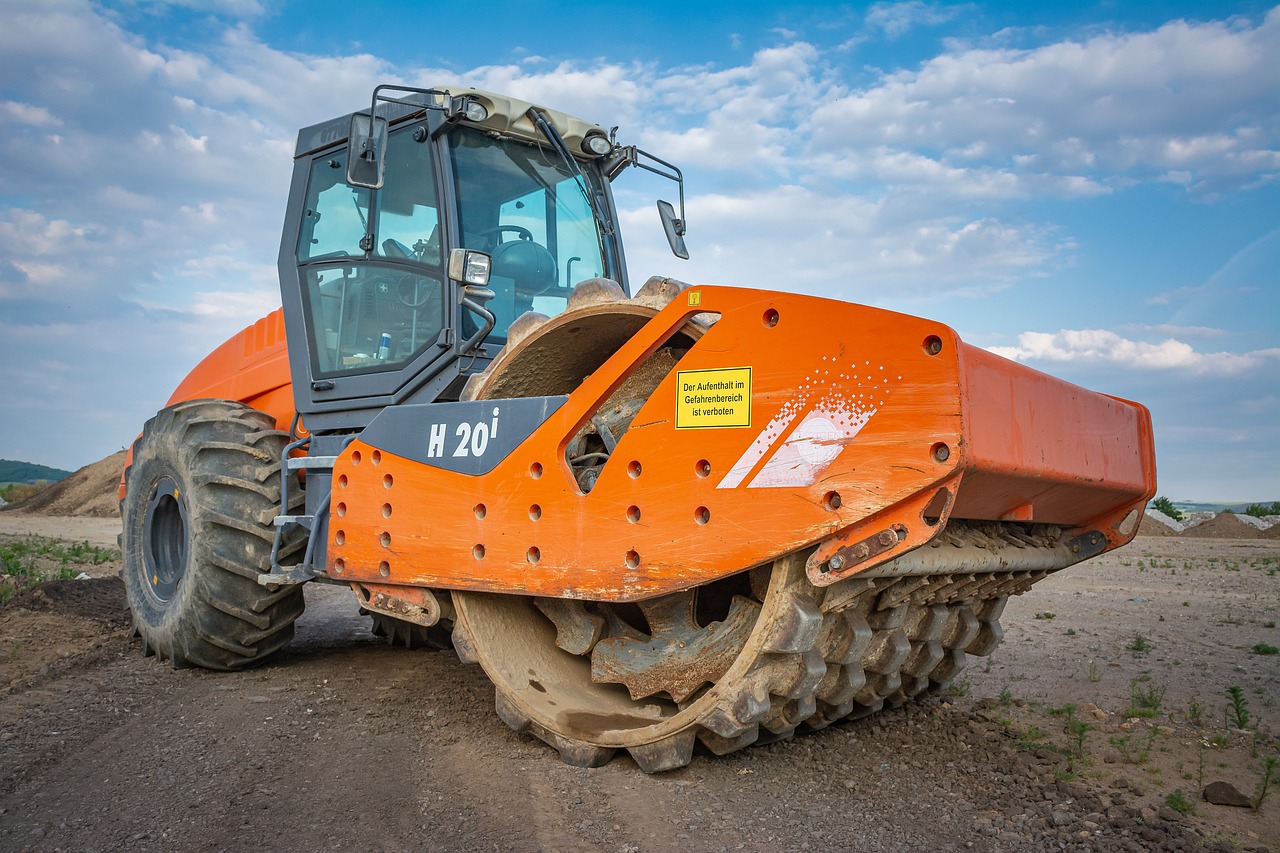ROAD ROLLER and their typs
Definition :- A road roller (sometimes called a roller–compactor, or just roller) is a compactor type engineering vehicle used to compact soil, gravel, concrete, or asphalt in the construction of roads and foundations. This typically only applies to the largest
:- examples (used for road-making).
This is most important for civil engineering construction.
TYPES OF ROLLERS:-
Depending upon the project requirement and soil to be compacted, different types of rollers are used for compaction work. The various types of rollers which are used for compaction are:
- Sheep foot Rollers
- Pneumatic tyred Rollers
- Vibratory Rollers
- Grid Rollers
- Smooth Wheel Roller
The following types of road rollers are generally used.
(1) VIBRATORY ROLLERS:-
This type of roller is fitted with one or two smooth surfaced steel wheels 0.9 m to 1.5 m in diameter and 1.2 m to 1.8 m wide.
Self propelled vibratory rollers are now available weighing from 4 to 6 tonnes.
Vibrations are generated by the rotation of an eccentric shaft inside.
A vibratory roller is used for compacting granular base courses. It is sometimes used for asphaltic concrete work.
(2) GRID ROLLERS :-
These rollers have a cylindrical heavy steel surface consisting of a network of steel bars forming a grid with square holes and may be ballasted with concrete blocks.
They are generally towed units and can operate at speeds between 5 and 24 km/h.
Typical weights vary between 5 tonnes net and 15 tonnes ballasted.
Grid rollers provide high contact pressure but little kneading action and are suitable for compacting most coarse grained soils.
(3) PNEUMATIC TYRED ROLLERS
This type of roller consists of a heavily loaded wagon with several rows of four to six closely spaced tyres. This is also called rubber tyred roller.
It provided uniform pressure throughout the width.
2 factors governing the amount of compaction are as follow
(1) Tyre pressure
(2) Area of contact
- Tyre pressure may be upto about 7 kg/cm2
- The coverage area is about 80%.
- The gross weight of the roller is about 6 to 10 tonnes which can be increased to 25 tonnes by ballasting with steel section or other means.
- The maximum density can be achieved by 8 passes of the roller. The optimum speed of the roller is between 6 to 24 km/h.
- Used for compacting cold laid bituminous pavements, soft base course materials or layers of loose soil. These rollers are also suitable for compacting closely graded sands, and fine-grained cohesive soils at moisture content approaching their plastic limits, though the compaction is not as high as that with the smooth wheel roller.
They are particularly efficient when used to finish off the embankment compacted by sheepsfoot roller or on loose sandy soils.
(4) sheep foot roller
These types of soil compaction equipment are most suitable for compacting fine grained soils such as heavy clays and silty clays. It can be used for compaction of soils in dams, subgrade layer in pavements and road construction projects. These rollers are also called tamping rollers.
Sheep foot roller consists of a steel drum having many round or rectangular shaped lugs or feet on it. Different types of lugs or feet are mainly spindle shaped with widened base, prismatic and clubfoot type. Different types of rollers are available having different diameters and widths of drum and different lengths and shapes of the lugs. The lugs size slightly varies from one sheepsfoot roller to another. Designing of the lugs of foots depend upon the specification and it varies from manufacture to manufacturers
Characteristics Sheepsfoot Roller:
- The Ground coverage area of these rollers is less. 8-12 % ground coverage under the lugs on the drum.
- Contact pressure up to 1400 to 7000 kpa.
- Sheepsfoot rollers work normally at speeds from 6-10 km/h.
- Pressure on the feet may be increased by filling the drum with wet sand or some other material.
- Mostly used for cohesive soils such as heavy clays and silty clays except for sandy soil.
- Compactive efforts are static weight and kneading.
- The thickness of the compacting layer is kept minimum 5 cm or more, which depends on the length of foot.
(5) Smooth wheel roller
It is one of the field compaction equipment that comes under the category of heavy compaction equipment. It is otherwise named as smooth drum roller. The front side has one steel drum fixed along with one wheel, and the rear side has one or two wheels with drums which will not vibrate. When the rear side of the roller has only one wheel, then it is called a tandem roller. If the rear side has two wheels, then it is called a three-wheeled roller.
The size of rear side rollers is almost 6 feet in diameter and it is not more than two feet wide. The front side roller is smaller in diameter than that of the rear side.
It provides 100 percent contact surface area under the roller, with the pressure in the roller up to 400 kPa.
It is commonly used for finer aggregates, and silts. This is widely employed to do the rolling of the subgrade to a profile and compaction of asphalt pavement.
For doing the deep layer compaction in clay and sand, this equipment is not suitable. This is due to the reason that the empty voids in the soil cannot be minimized without the use of vibrators


Leave a Reply